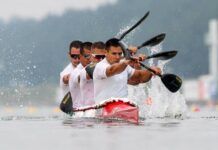Introduction
You might be surprised to hear that training itself doesn’t make you fitter – it’s the recovery period afterward that truly matters. In this journey towards better fitness and strength, understanding the concept of supercompensation becomes pivotal for an athlete.
The Significance of Recovery
After a workout, your body initiates a response to enhance fitness and strength. This response, known as supercompensation, occurs during the recovery period post-training. It’s during this phase that your body not only restores but improves performance in various aspects, including strength, speed, muscles, tendons, bone density, and mental resilience.
The Supercompensation Cycle
The supercompensation cycle and the factors influencing recovery time can be broken down into 4 stages:
- Fatigue Phase (1-2 hours): Post-workout, performance may dip, triggering the recovery response.
- Physiological Recovery and Repair (1-2 days): The body undergoes repair, possibly accompanied by DOMS. Rest, active recovery, and proper nutrition bring you back to baseline fitness.
- Supercompensation (1-3 days): The body adapts, preparing for the next challenge. Energy levels rise, and any DOMS fades. Applying a new stimulus at this stage restarts the cycle.
- Gradual Loss (3-7 days): Without further stimulus, gains gradually diminish. Increased training brings the benefits of supercompensation back.

Timing Your Recovery
…. The remainder of this content is for members only…













